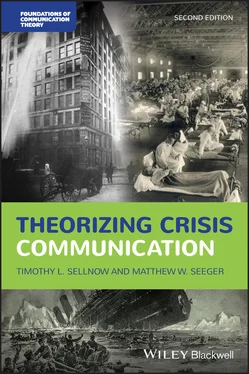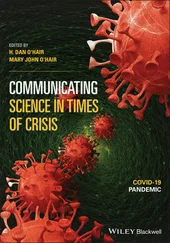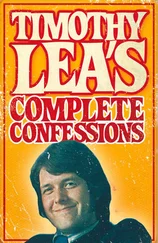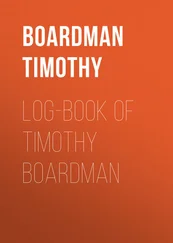323 317
324 318
325 319
326 320
327 321
328 322
329 323
330 324
331 325
332 326
333 327
334 328
335 329
336 330
337 331
338 332
339 333
340 334
341 335
342 336
343 337
344 338
345 339
346 340
347 341
348 342
349 343
350 344
351 345
352 346
353 347
354 348
355 349
356 350
357 351
358 352
359 353
Crisis, disaster, and risk have emerged as critical areas of multidisciplinary inquiry. These events continue to manifest as deeply disruptive occurrences and as significant forces of social change. Despite their power, crises and disasters are underexamined phenomena. Effective understanding, management, and response requires attention from the research community. This attention also necessitates the development and application of a diverse and multidisciplinary body of theory.
Puzzles and questions are the stuff of theory creation. Crises and disasters, by definition, are high uncertainty events that defy our sense of normal and our established processes and frameworks for making sense. Crises make the full realization of what is happening, why, and with what near and long-term outcomes difficult. Theory, and especially the predictive and explanatory functions of theory, help us explain these confusing and uncertain events.
We were gratified and somewhat surprised at the success of the first edition of Theorizing Crisis Communication. Although we believed a summary of crisis theory was important, we also assumed that crisis communication remained a relatively specialized area of communication research. The success of the first edition demonstrated that crisis communication is recognized as a critical area of practice for individuals, organizations, communities, and society at large and is becoming increasingly mainstream.
The second edition of Theorizing Crisis Communication reviews a larger body of theory reflective of the continuous growth in crisis communication scholarship. In addition to the discussion of more theories in all chapters, this edition includes new chapters on theory formation, social media, and applications of theory, as well as expanded treatment of technology, resilience, and risk, among others.
Special thanks to M. Scott Poole for his support and encouragement and to the editorial staff at Wiley for making a second edition possible. We also wish to thank the anonymous reviewers who provided feedback on the first edition.
There are many others to thank for their patience and support including our spouses, Beth and Deanna, and our children, Maggie and Henry and Debbie and Rick, and our grandchildren, Seneca, Greer, Lincoln, and Emmett.
We are also grateful to Stephanie Church for her editorial review, and America Edwards, Khairul Islam, Ashleigh Day, Sydney Wallace, Laura Boutemen, and Rodrigo Soares.
Many colleagues and current and former students allow us to share ideas including in no particular order Brook Liu, Marsha Vanderford, Barbara Reynolds, Joel Iverson, Dennis Gouran, Lee Wilkins, Bill Benoit, Tim Coombs, Andreas Swartz, Dan O’Hair, Kevin Barge, Robert Littlefield, Robert Heath, Finn Frandsen, Winni Johansen, Keith Hearit, Robert Rowland, Ron Arnett, Donyale Paggette, Bengt Johansson, Martin Loeffelholz, Andreas Schwarz, Amiso George, Christine Huang, Julia Smith, Catherine Galentine, Julie Novak, Steven Venette, Patric Spence, Ken Lachlan, Jeff Brand, Robert Ulmer, Melvin Gupton, Laura Pechta, Colleen Ezzeddine, Catherine Galentine, Keri LuBell, Bill Nowling, J. J. McIntyre, Alyssa Millner, Elizabeth Petrun-Sayers, Kathryn Anthony, Bethney Wilson, Nathan Stewart, Charles Bantz, Morgan Wickline, Emina Herovic, and Ronisha Sheppard.
Revising this work, amid a global pandemic of historic proportions as well as widespread protests regarding social justice, created unique challenges. While endeavoring to represent the moment, we also worked to ensure that we addressed both those risks that are understood and those that are emerging. Emerging infectious diseases, technological failures, hurricanes, fires, and chemical and biological contaminations are sadly common. The disruption and harm caused by factors such as climate change are new, especially given the scale. In fact, we are seeing more events that we would characterize as mega-crises, based on the scope, scale, and duration of the harm. Both familiar and new risks are likely to be increasingly important influences on our lives, and we hope this book aids and encourages those who seek to understand and manage crisis events.
We dedicate this work to our newest grandchildren Greer Johanna Swift and Emmett Adam Sellnow-Richmond.
Dr. Brooke Fisher Liu
University of Maryland
Crises present opportunities and threats. Communication helps us understand and make meaning of these opportunities and threats. With a sound understanding of crisis communication theory, leaders are better equipped to navigate troubled waters and steer their organizations and communities towards a stronger tomorrow. Understanding crisis communication theory also empowers community members on a path towards resilience in collaboration with or independent from organizations. At the individual level, crisis communication theory and the related research can help individuals better prepare themselves and their families for hazardous weather, terrorist attacks, active shooter events, and many other crises. With the knowledge presented in this book, readers can become more critical consumers of social media, traditional media, and political discourse surrounding crises. This book also positions readers to ground their research in the rich theoretical tapestry of the crisis communication field.
When this book was published in 2013, it was the first undertaking to synthesize decades of research from a variety of disciplines into a single resource. The book provides an accessible entrée for students, researchers, and professionals into the power of theory. As social psychologist Kurt Lewin famously wrote, “There is nothing so practical as a good theory” (Lewin, 1951, p. 169). In the second edition of this book, Sellnow and Seeger capitalize on the success of their first edition, while keeping up with recent crisis communication theorizing.
Friends, colleagues, and students often ask why I study the potentially depressing topic of crises, especially since I generally am a positive person. You may also have been asked why you are studying crises and, thus, reading this book. While perhaps not obvious, the answer should be simple: Through communication, leaders, and community members make sense of crises, collectively overcome obstacles, and – if done well – improve the wellbeing of society. When done poorly, ineffective crisis communication contributes to more widespread damage including loss of life and property, environmental harm, and financial ruin.
As you can see, crisis communication is the perfect area of study for eternal optimists who see the positive possibilities of crisis management and the land mines to avoid. As Sellnow and Seeger note in Chapter 1 of this book, “While avoiding all crises and disasters such as earthquakes and tsunamis is impossible, some can be avoided and most can be more effectively managed” (p. 2). To understand the power of crisis communication we have to simply look at the world around us. As this book goes to press, we are experiencing a global pandemic on a scale that has not been experienced since the 1918 Spanish Flu Pandemic. As we witness history in the making, we are also experiencing the powers of effective crisis communication and the pitfalls of ineffective crisis communication. The COVID-19 pandemic has sharpened our attention on the role of media in crises (see Chapters 7 and 8), including the World Health Organization declaring COVID-19 an infodemic and a pandemic (WHO, 2020). The COVID-19 pandemic also has crystalized the importance of conveying messages that motivate people to take appropriate protective actions (see Chapter 9) and the central role of ethics in crisis communication (see Chapter 11).
Читать дальше












